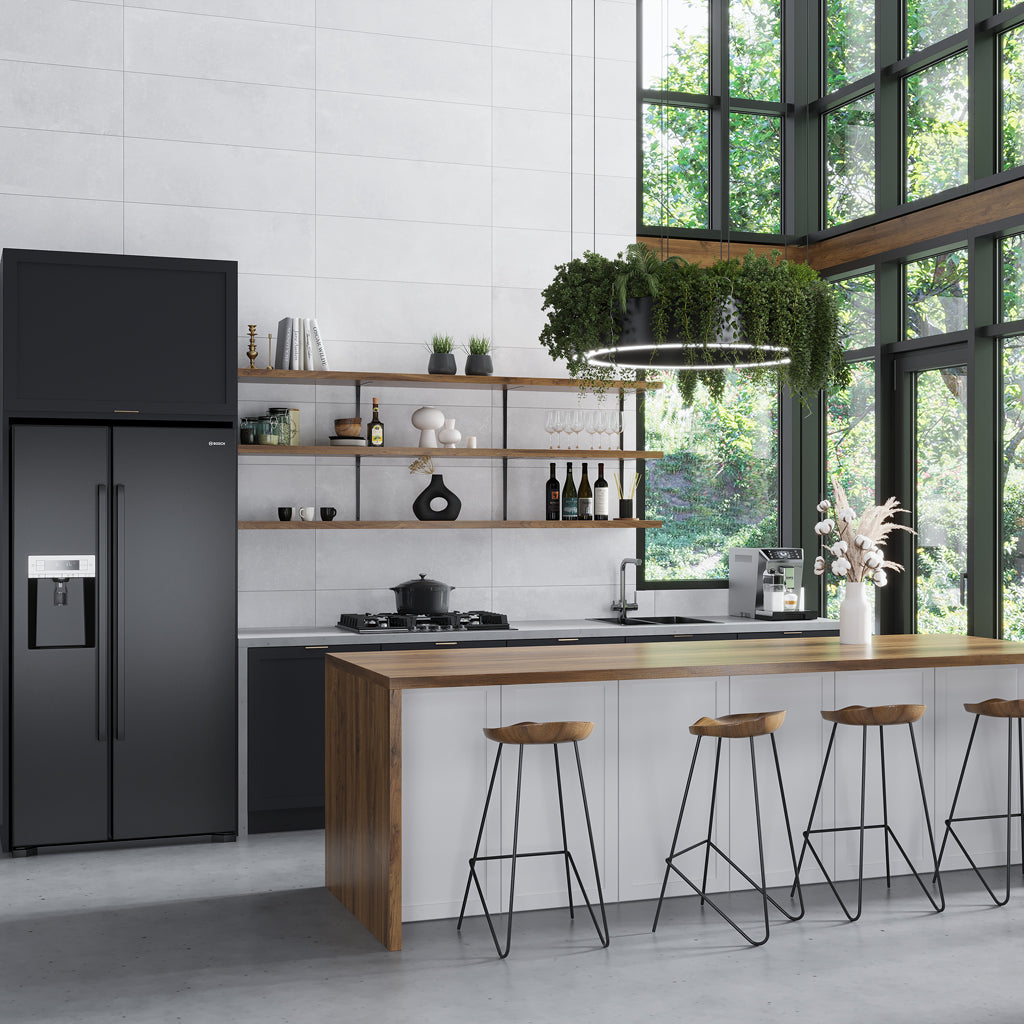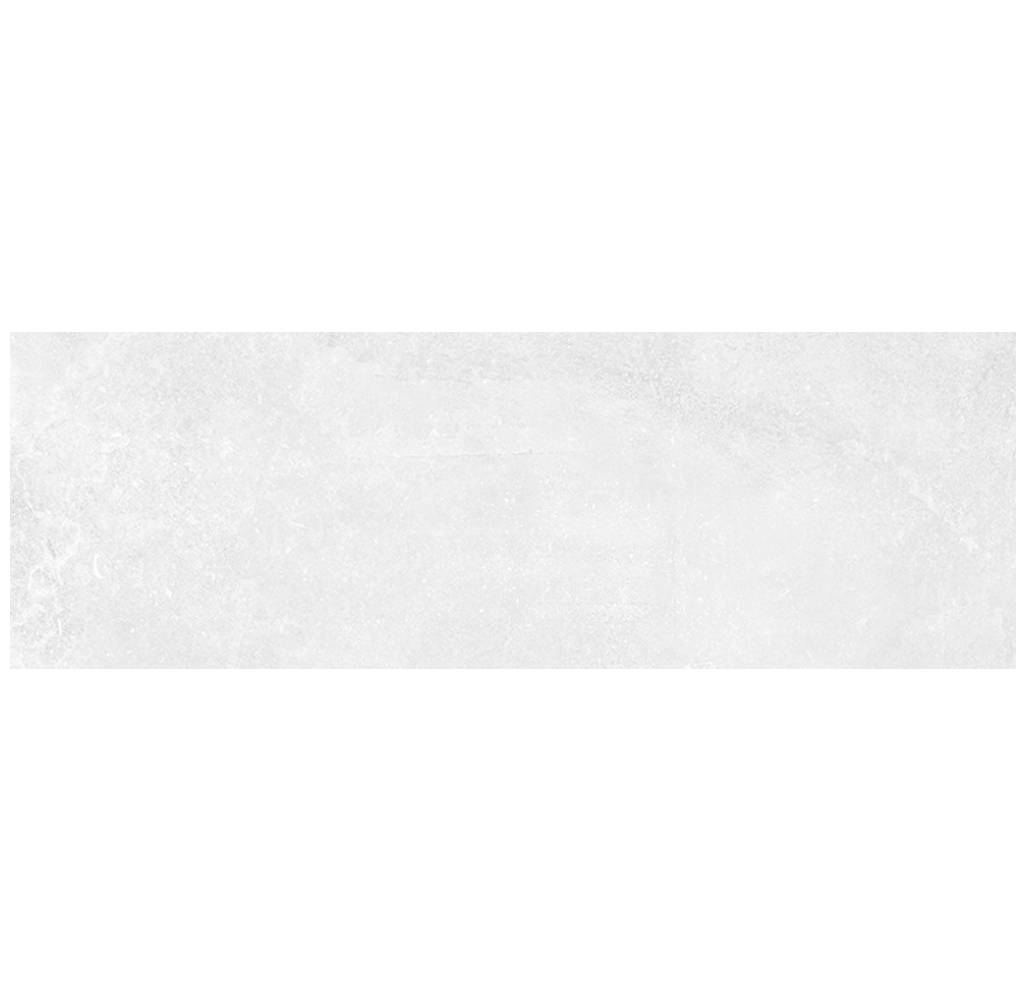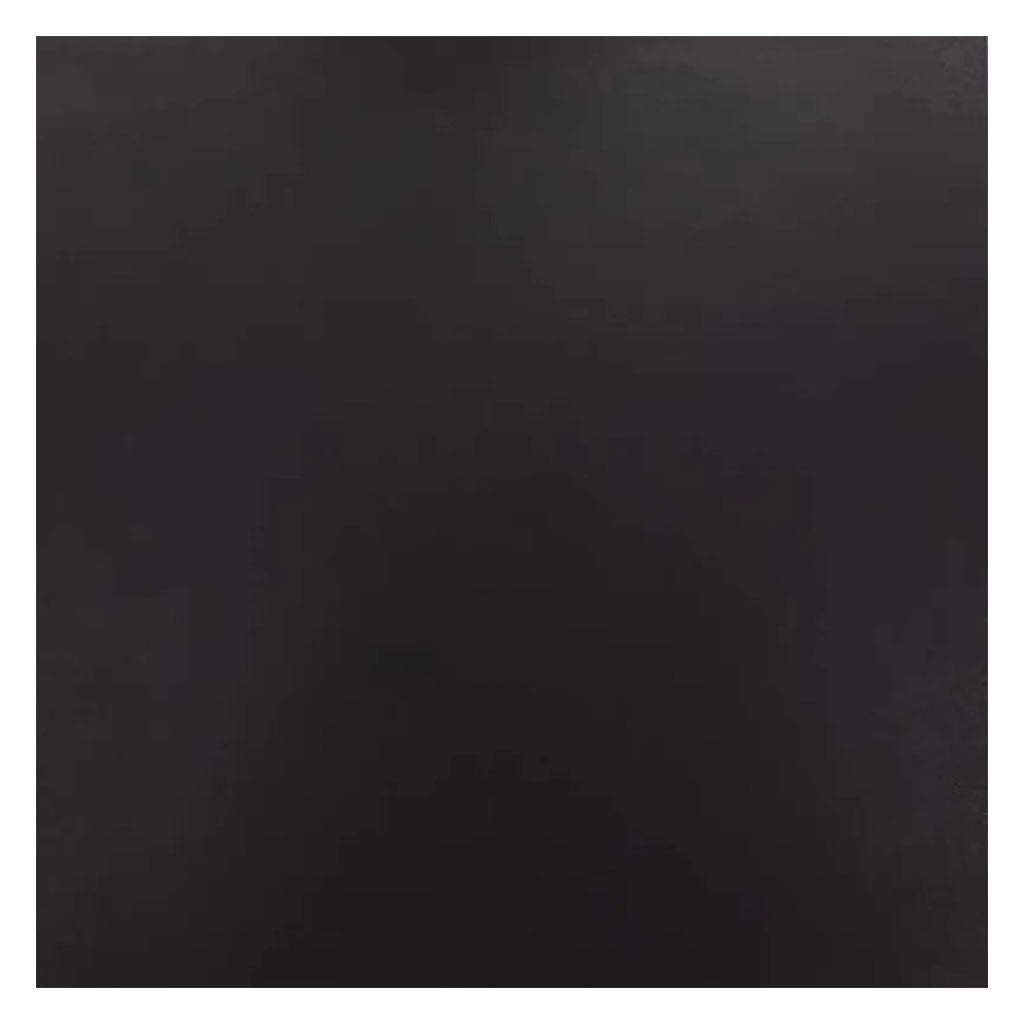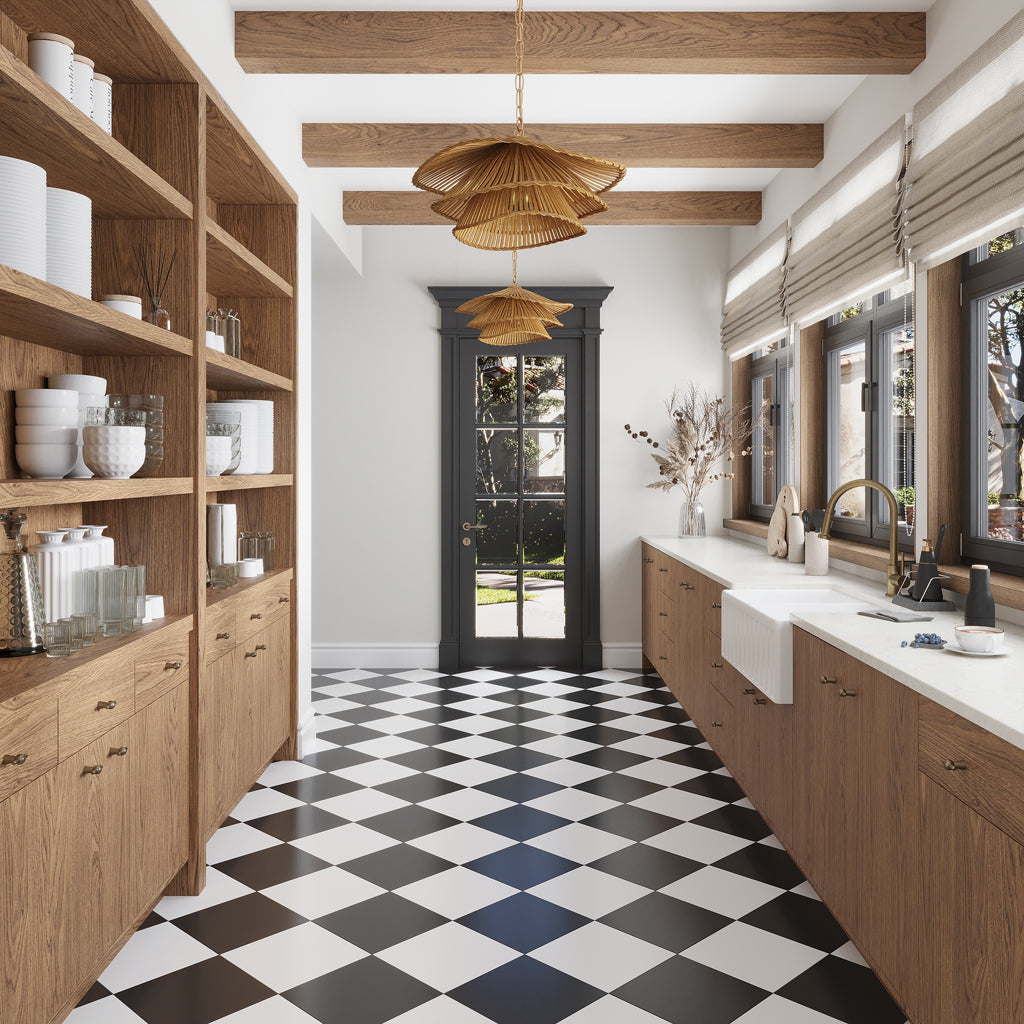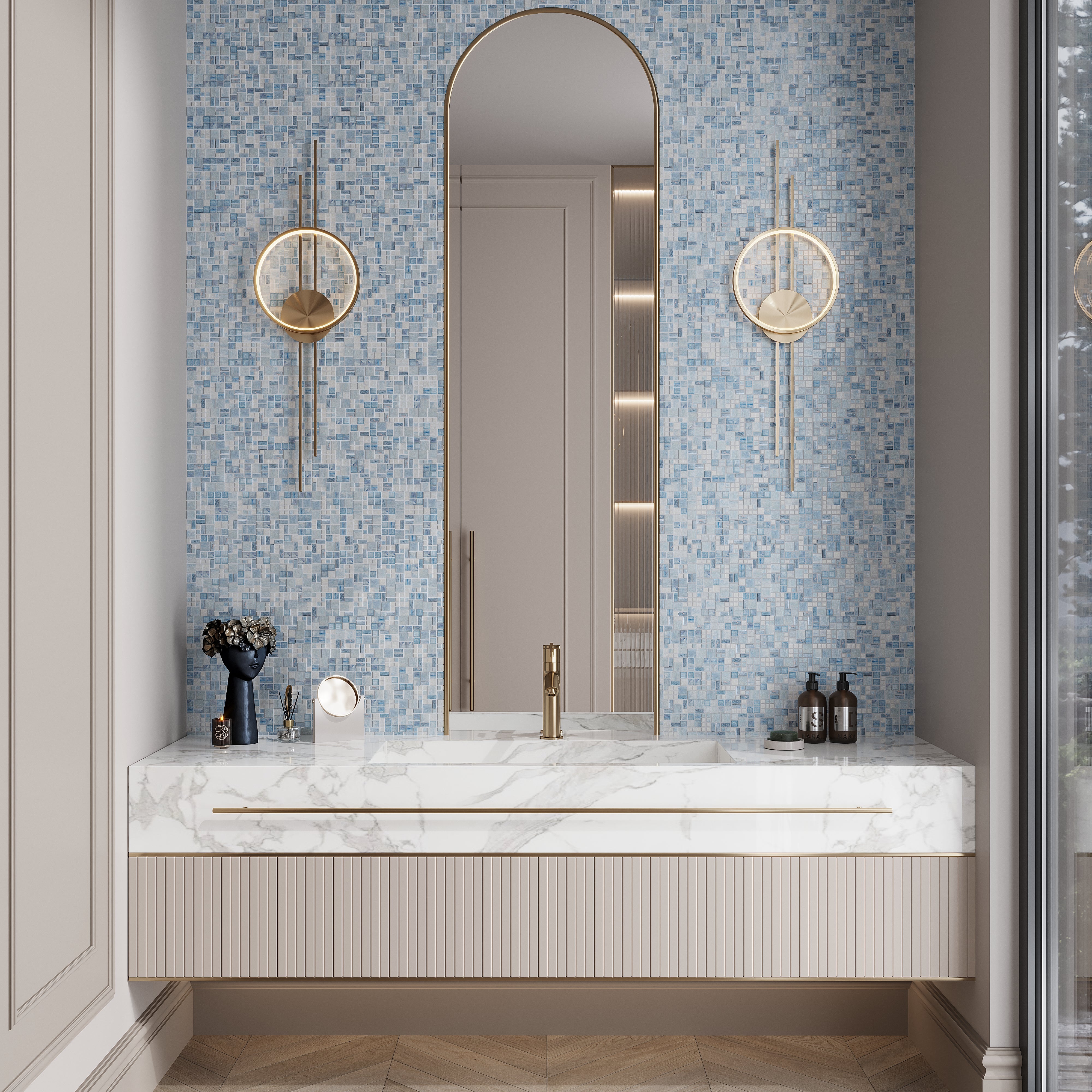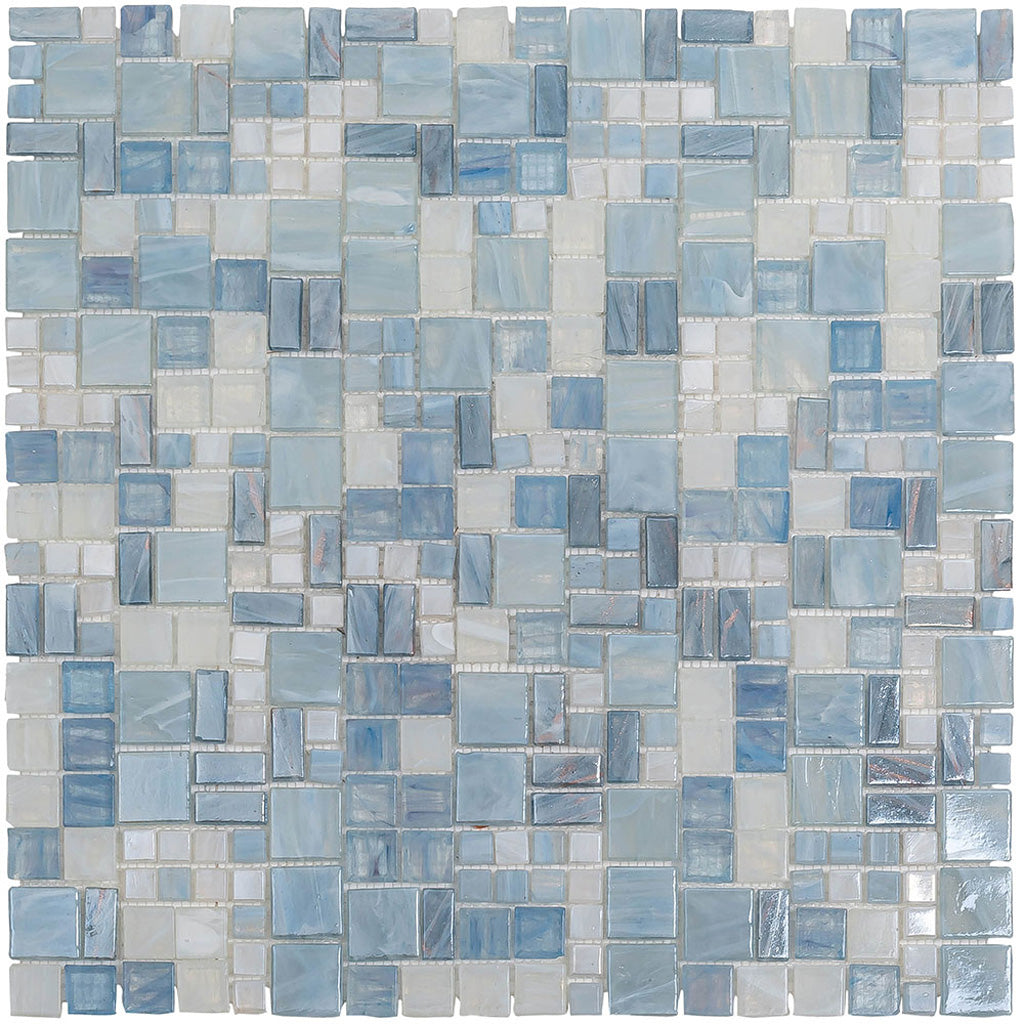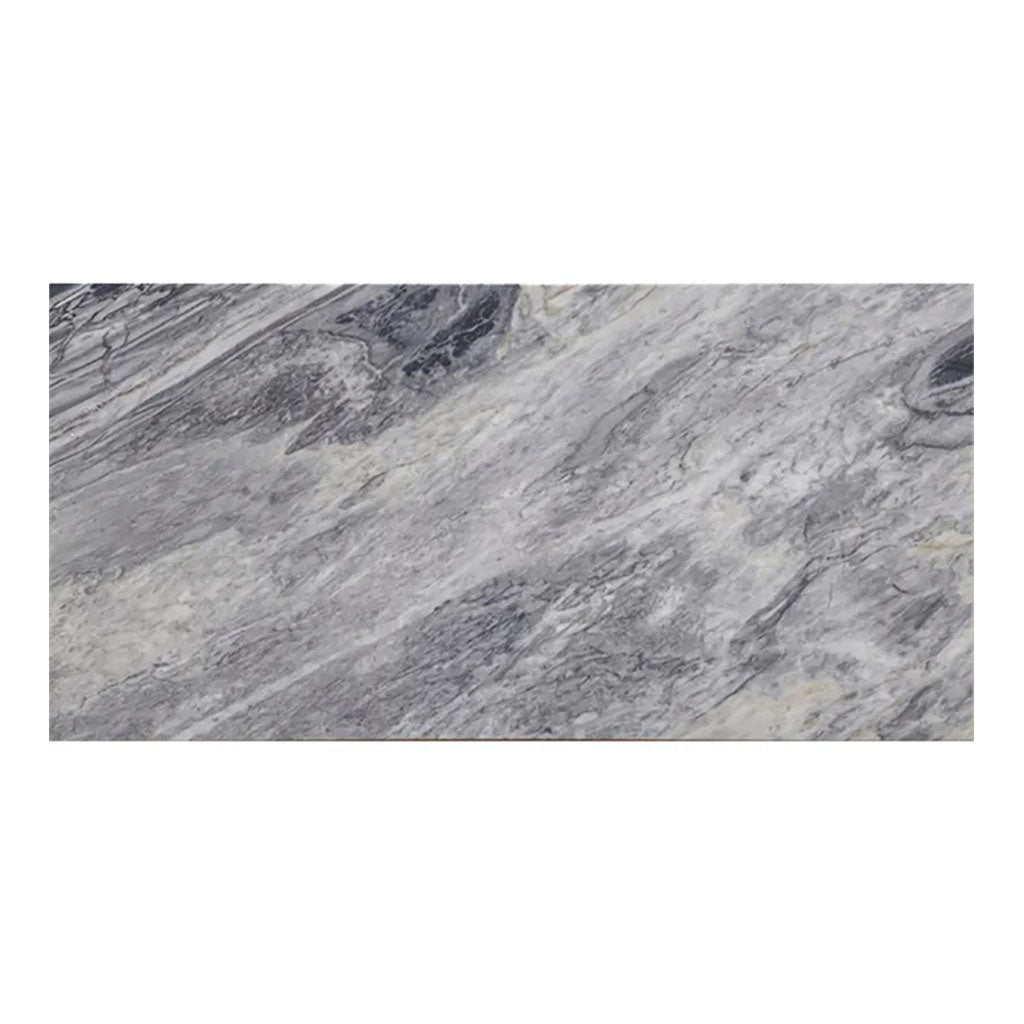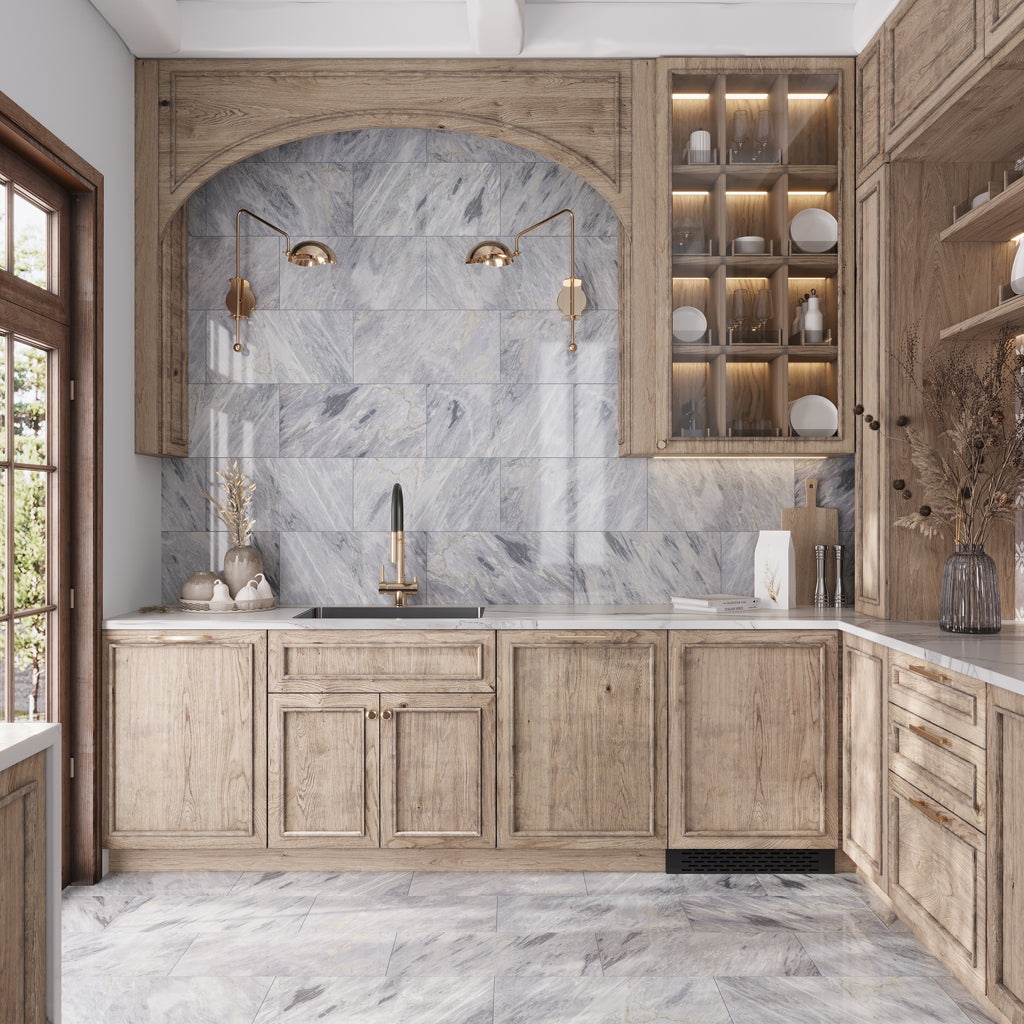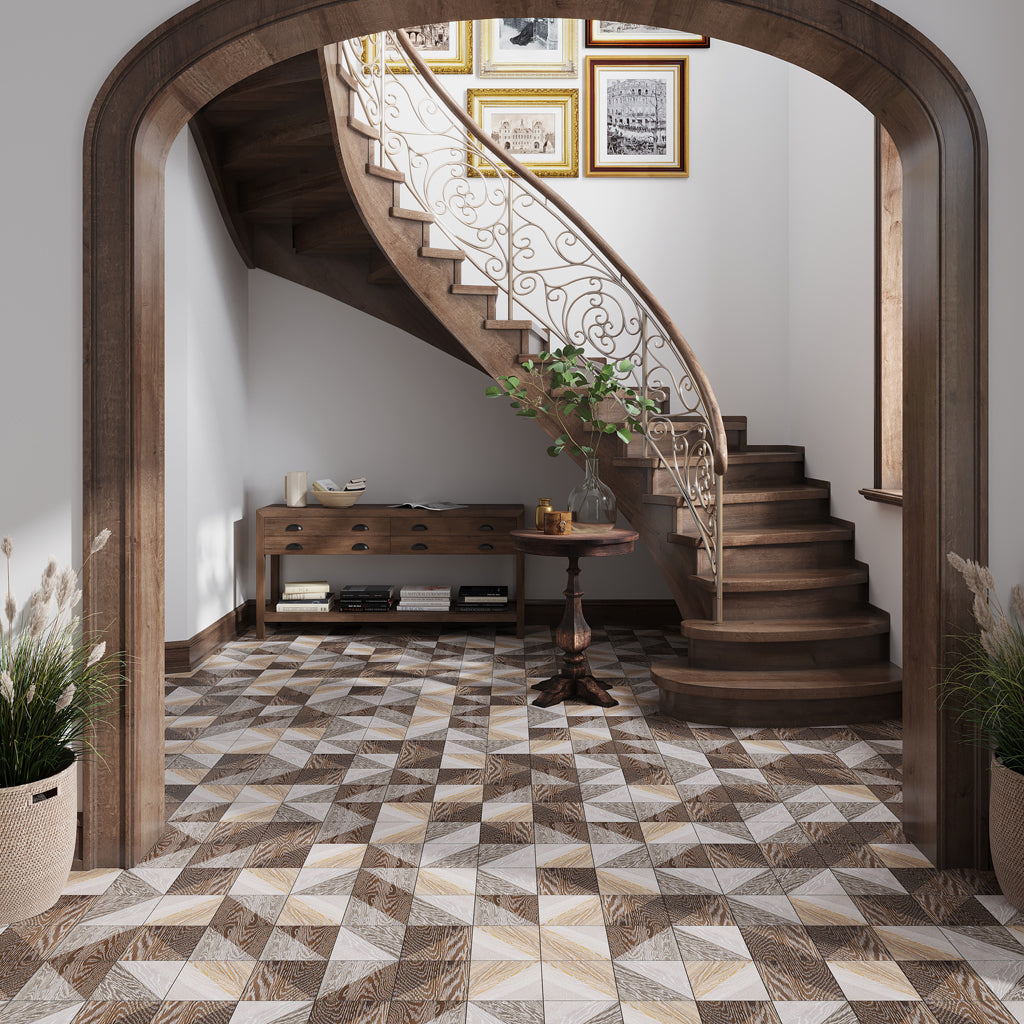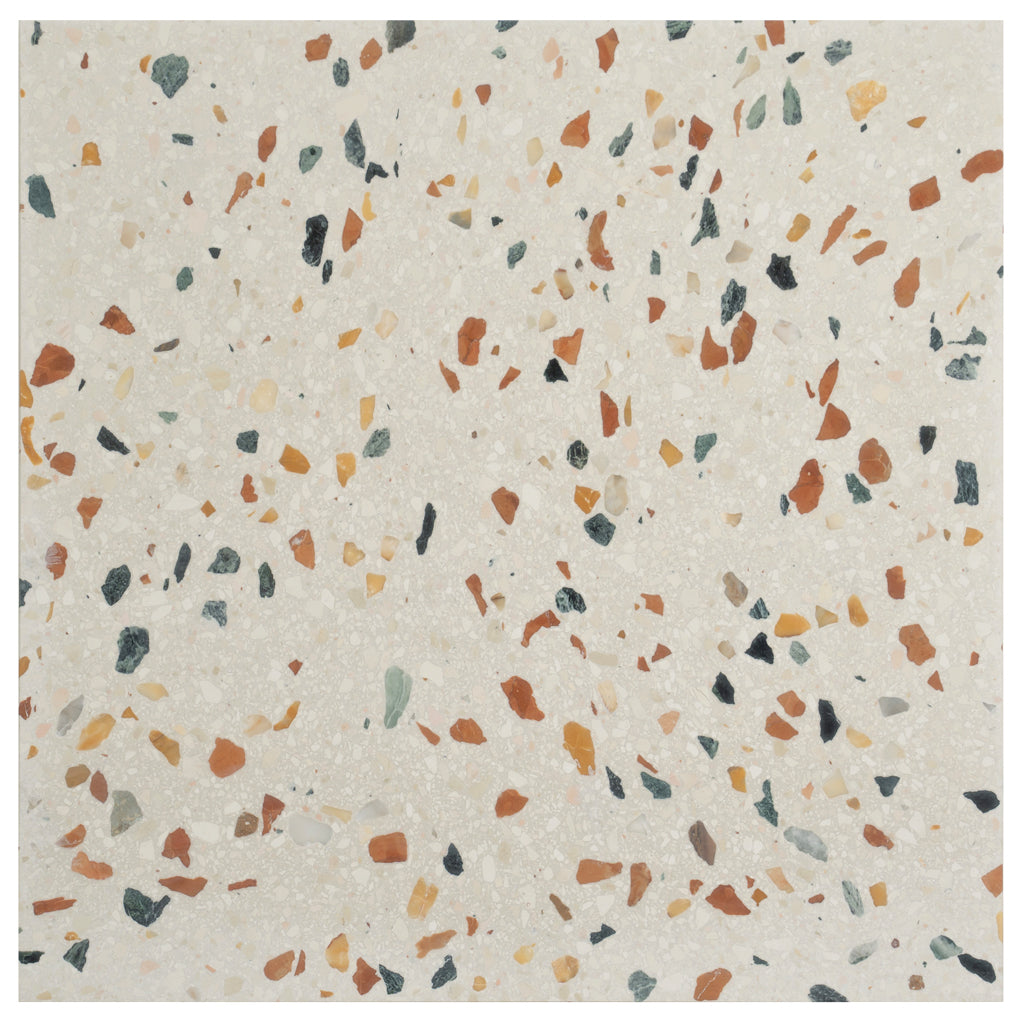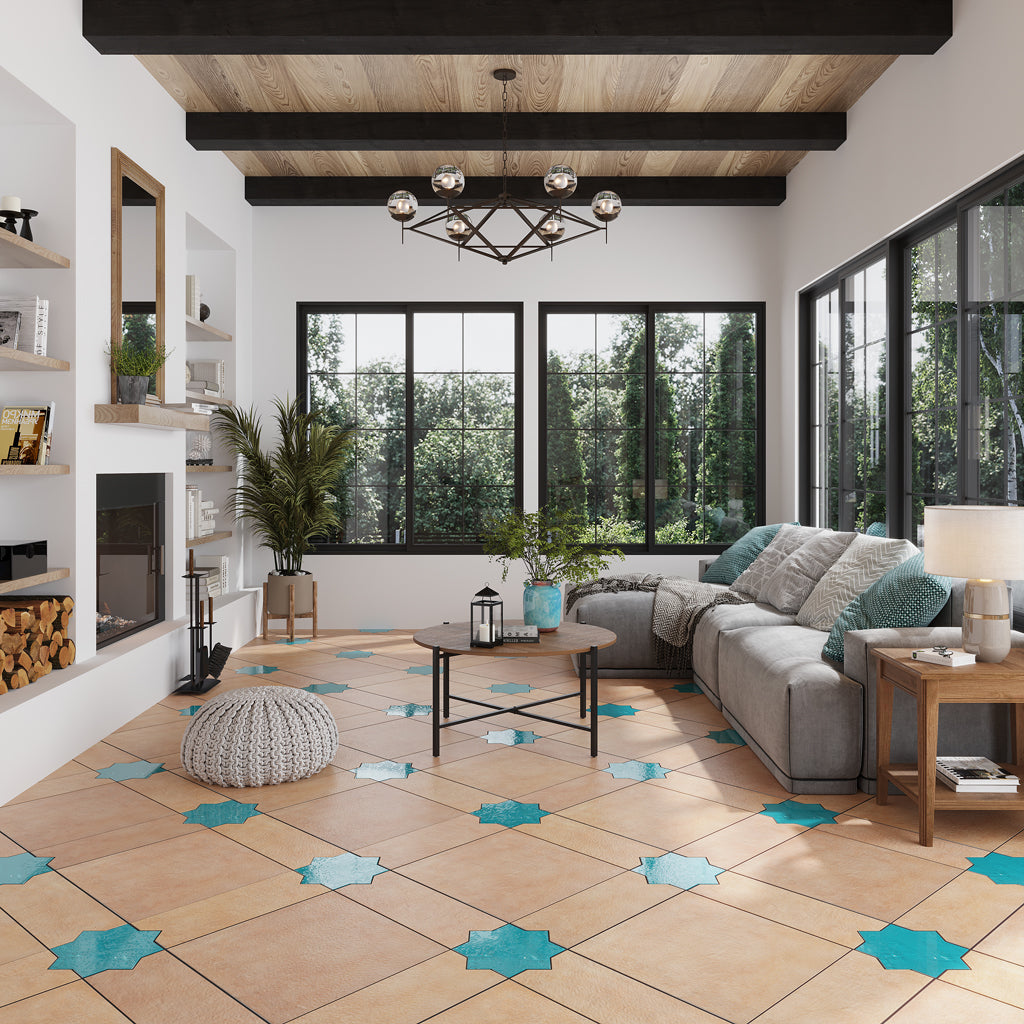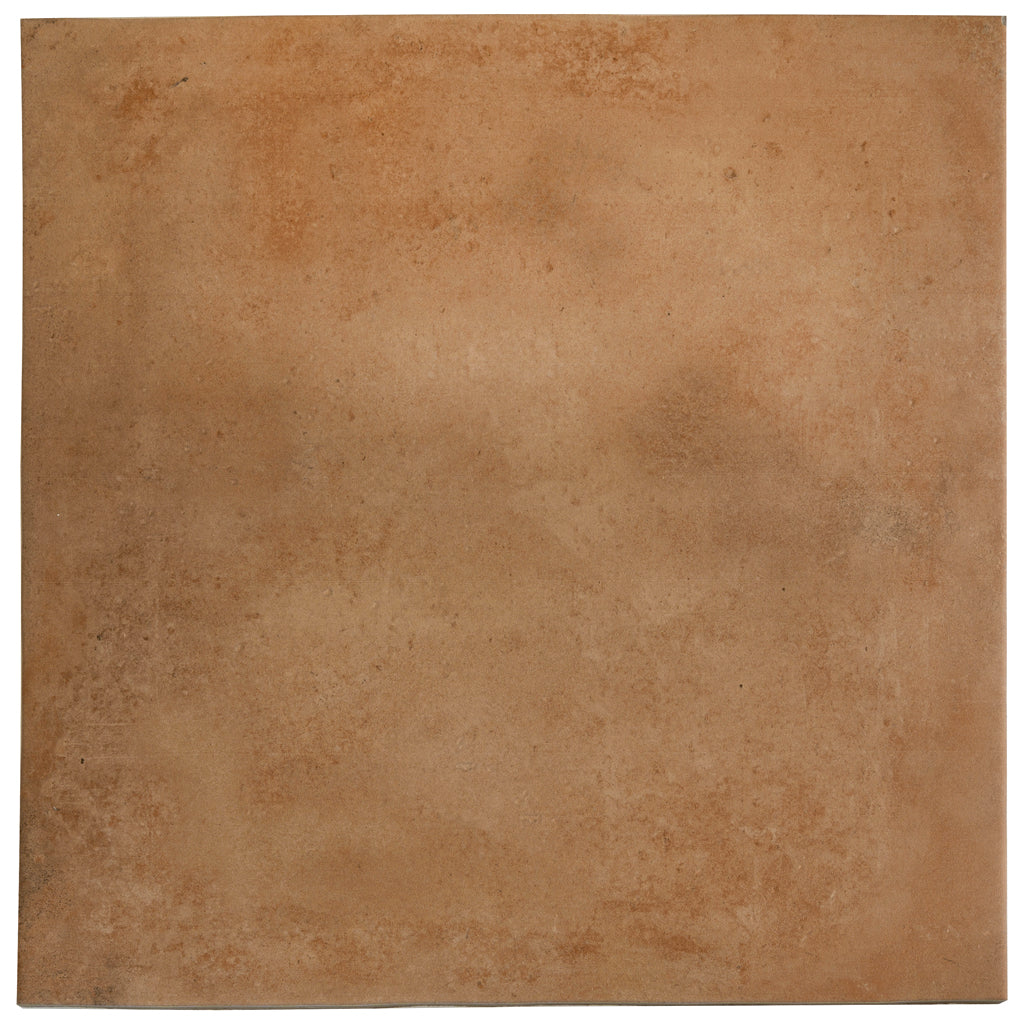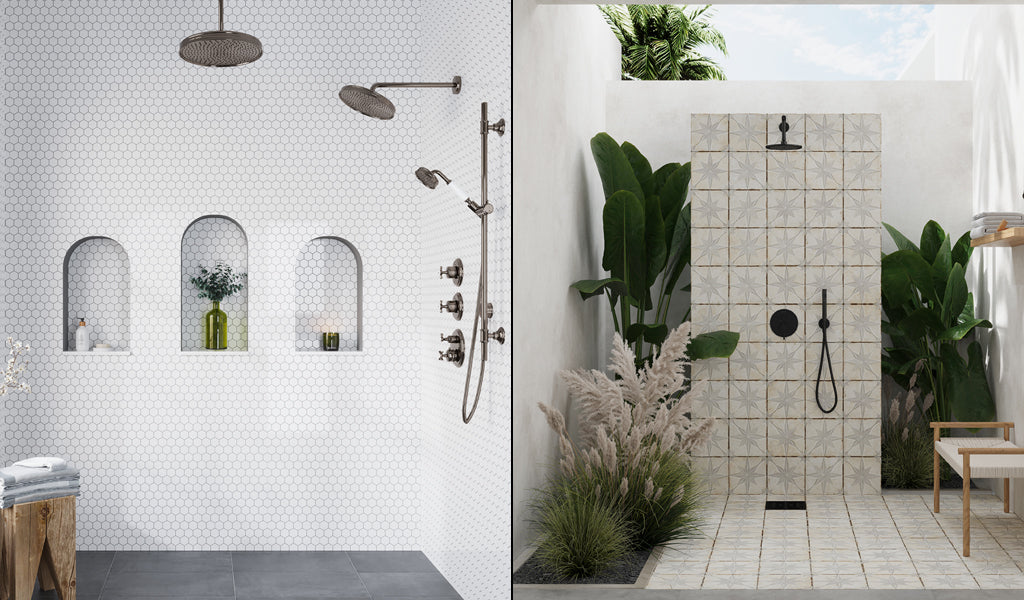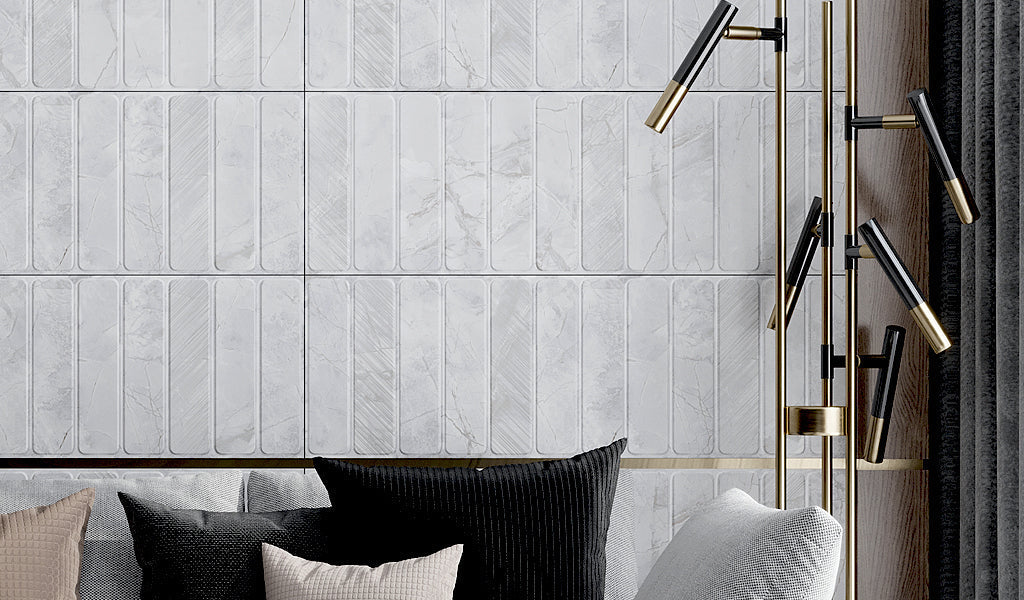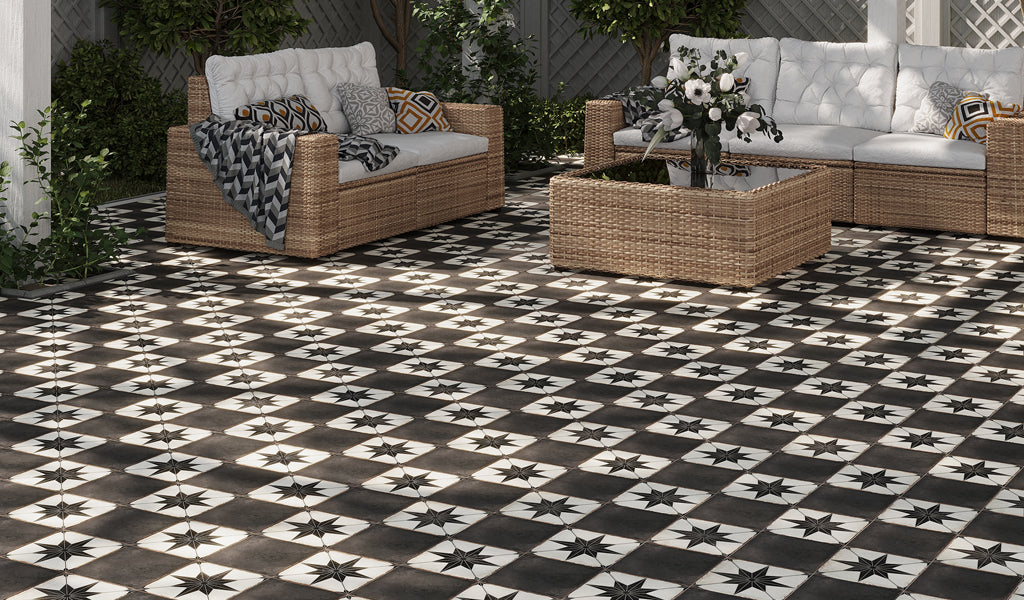The 7 Most Popular Tile Flooring Types — Which One is Right for You?
Sep 12, 2025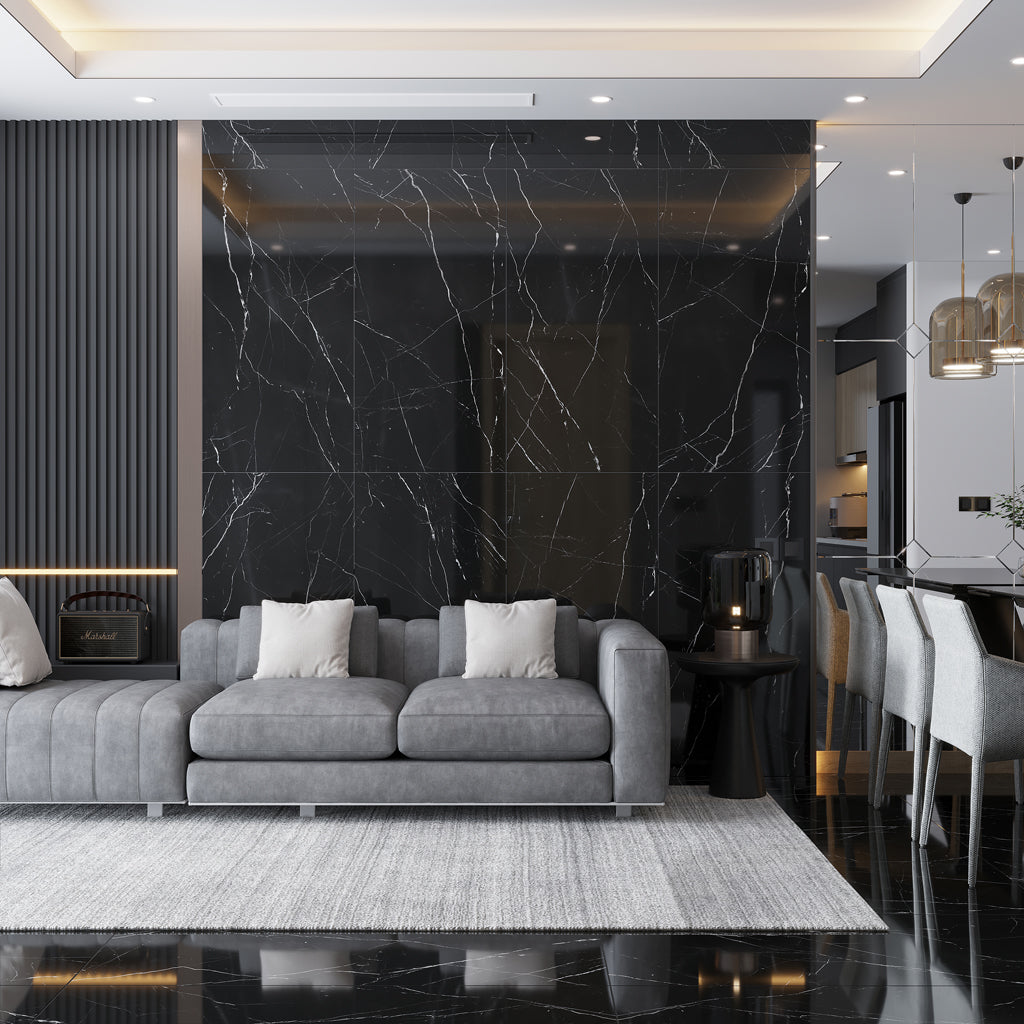
Given that flooring makes up a substantial part of a room, it deserves thoughtful consideration. Among all options available, floor tile is a world unto its own, widely used in kitchens, bathrooms, or any spot where form and function matter most. When selected with care, it sets the stage for many years of good looks, comfort, and reliable performance. The trick is to know what to buy. This is why we are spotlighting the 7 most popular types of tile flooring to help paint a clearer picture of what’s out there.
Key Takeaways
- The best tiles for flooring are those that can last a lifetime, match the intended use of the room, and offer easy upkeep.
- Ceramic floor tiles are popular because they blend durability with upfront affordability, while porcelain flooring is celebrated for its signature strength.
- Different types of floor tiles, such as ceramic, porcelain, and glass, can replicate the look of sensitive natural materials like hardwood and stone.
Whether your taste leans toward classic sophistication, sleek modernity, or rustic charm, the possibilities for flooring are endless. In fact, today’s innovative tiling materials are pushing the boundaries on how a surface can look and feel. Prepare to be floored as we break down floor tile types for you to explore, envision, and execute the space of your dreams with confidence.
1. Ceramic Tile: The Everyday Classic
Ceramic tile has always been a sought-after flooring of choice for discerning homeowners and designers. While it may not be the hardest material, its clay body is non-porous, heat-resistant, and can last for decades with outstanding performance. These properties make it a natural fit for the living room, kitchen, mudroom, and many other interior areas that experience high moisture and bustling footsteps. On average, the costs of glazed ceramic tile can range from $3-$15 per square foot, setting it among affordable types of tile flooring.
During manufacturing, ceramic flooring is enameled with stunning colors, from muted shades to vivid jewel tones. Finishes abound: polished, matte, and textured cater to various aesthetic preferences. This makes for an endlessly versatile covering that turns any area it adorns into a visual statement. Better still, it can take on the appearance of other surface materials, such as wood and marble. A bonus for budget-conscious homeowners not looking to break the bank.
A word of advice: Like with all other types of floor tiles, it’s important to verify that the product you set your eyes on is approved for floor use and offers a slip-resistant coating. Not all ceramic tiles are created the same. Some are lightweight and cannot withstand the pressure of daily wear and tear; created solely for wall application.
Apollo Tile’s Ceramic Tile Material to Consider:
Elegance and whimsy come together when you pair Pistachio Green 5x5 Matte Star Ceramic Tile with Pistachio Green 5x5 Matte Ceramic Cross Deco Tile. Its interlocking Moroccan-style pattern blends geometry, color, and historical resonance, ideal for bestowing a room with Mediterranean appeal.
-
White 12x36 Ceramic Matte Large Format Tile has a slightly rough texture that emulates that of natural stone.
2. Porcelain Tile: The Pinnacle of Resilience
For an area that requires robust flooring, porcelain tile can take its functionality a step further. A subset of ceramic, it is clay made and fired at high temperatures to create a denser surface that possesses titanium-strength and can stand up to anything life throws at it. This also means porcelain is among the few floor tile types that can be laid outdoors on patios floors, walkways, or pool surrounds. It stands unyielding against relentless wear and tear in high-trafficked areas and keeps imperfections less noticeable over the years.
As a kitchen floor tile, it would take quite a sharp impact to chip or crack it. And if you’re prone to making messes yet prioritize easy clean-up, porcelain is a forgiving surface that catches all the spills, splatters, and crumbs. In wet areas like bathrooms and laundry rooms, it’s not as vulnerable to water damage as other types of floor tiles, thanks to its low absorption rate. And as long as the tile is installed properly and grout lines are sealed, upkeep is a breeze.
But porcelain isn’t just something to walk on. It comes in a slew of colors, patterns, and sizes. Whether you’re crushing hard on “less is more” minimalism or fancy something more opulent, there’s superbly reimagined hardwood, terrazzo, terracotta, or stone porcelain floor tiles to give your space a tasteful glow-up you envision at a fraction of the cost.
Apollo Tile’s Porcelain Tile Material to Consider:
- A room runs the risk of being too one-dimensional with Deep Charcoal Black 12x12 Matte Square Porcelain Tile, but the inclusion of Arctic White 12x12 Matte Square Porcelain Tile yields an interesting checked design that’s a feast for the eyes.
- Deep Forest Green 3x19 Glossy Picket Porcelain Tile creates a painterly moment both indoors and outdoors.
3. Glass Tile: The Epitome of Luxe Appeal
There are many ways to make your space look its absolute best. That’s certainly the case with glass floor tile. Its luminous quality adds a level of luxe detail that instantly garners attention. It comes in both softer and vibrant hues, as well as myriad shapes and patterns. To choose the best design, consider a style you love and anticipate loving for years to come. Modern choices include sustainable options such as recycled glass tile, which has begun to strike a chord with eco-conscious homeowners. Think natural, earthy, and effortlessly beautiful.
Glass mosaics tend to be on the higher end compared to other types of floor tiles, with average costs ranging from $15 to $20 per square foot. However, they too can mimic the look of marble and hardwood without you having to spend a fortune on genuine material. Using them in smaller or pass-through spaces, such as the entryway or powder room, can be a cost-effective way to make a big impact.
We’re going to let you in on a secret: glass flooring may appear delicate, but it’s surprisingly hard-wearing, watertight, and weather-resistant. Outside of their usual backsplash and wall use, mosaics can go on kitchen, bathroom, or outdoor floors where style and practicality take center stage. One of their standout traits is ease of installation. Shaped individual glass pieces are fixed to mesh sheets to allow for a hassle-free application. Like other types of tile flooring, they don’t harbor dust, making them an excellent option for allergy-sensitive households.
Apollo Tile’s Glass Tile Material to Consider:
- Brown Gold 12x12 Glossy Uniform Square Glass Mosaic Tile can go everywhere, so consider taking its exquisite flair from the ground up.
- Light Blue 12x12 Glossy Square Glass Mosaic Tile remains popular for its elegant simplicity.
4. Marble Tile: The Opulent Statement
Few materials rival the authentic beauty of a marble floor tile. It is made by geological forces, so each piece is unique with its veining. For many, that’s part of its charm and a gold standard for those looking to up the perceived value of their home. Different types of floor tiles suit different styles. For instance, Calacatta tile is punctuated by peculiar gold markings that bring a sense of grandeur to the simplest of rooms.
Marble is a remarkably hard-wearing floor tile type and will patina with the years as it embeds into its environment. It’s also one of the few materials that can be used indoors and outdoors, allowing for a seamless transition between the two areas. Flooring tends to be cool underfoot, which may be a welcome relief in the warmer season but less so in winter. Luckily, marble tiles conduct heat well and can be paired with underfloor heating to keep interiors comfortable year-round.
There was a time when conventional wisdom was to avoid natural stone in bathrooms and kitchens due to its sensitivity to moisture and spills. But times have changed. A new generation of sealers keeps porous marble flooring from water damage and staining.
Apollo Tile’s Marble Tile Material to Consider:
- Eastern Black 10x10 Honed Hexagon Marble Tile creates a dramatic and austere look in the room it inhabits, which can be softened by lighter and sumptuous furnishings.
- To infuse your space with timeless elegance, lean on Gray 12x24 Polished Calacatta Bluette Marble Large Format Tile for its one-of-a-kind character.
5. Wood-Look Tile: The Cozy Showstopper
In areas like entryways and living rooms where first impressions are formed and conversations happen, hardwood tiles set the foundation for a warm and inviting atmosphere. Tile that looks like wood emulates the appearance of genuine parquet floors, from their grain pattern and life-like knots down to subtle shade variation. That’s not all. It offers a more resilient construction that thrives in areas where the real thing might struggle. No pre-acclimatization or sanding, staining, and sealing needed.
For many open-space layouts, installing the same wood-look tile flooring in connecting areas allows there to be visual flow throughout. Besides large square formats, Apollo Tile offers 8x48 and 6x36 tile sizes. These wooden planks can be used to break away from convention with artistic herringbone, chevron, or basketweave patterns that call to mind a chic Parisian living room, a country-style kitchen, or a contemporary bathroom retreat.
Apollo Tile’s Wood-Look Tile Material to Consider:
For a more subtle statement, soft-toned Beige 6x36 Matte Field Porcelain Tile exudes an effortless look reminiscent of Scandinavian design. Richer wood stains, similar to Brown 6x6 Matte Square Porcelain Tile, create a high-end focal point.
6. Terrazzo-Look Tile: The New Modern
Traditional terrazzo is composed of fragments that could be anything from glass, granite, quartz, or marble. Its porcelain lookalike is a little different, even in its practicality. Terrazzo-look floor tile’s playful mix of color, texture, and super-sized chips creates bona fide art underfoot. And as it continues to expand, sizes featuring geometric mosaics and large formats are finding their way into every area of the home and different design styles.
Given that terrazzo-inspired floors are made from robust tiles, they can meet the demands of the toughest, hardworking environments. Our thoughts? We believe this speckled material is set to remain one of the most popular types of tile flooring for living rooms, kitchens, bathrooms, or any spot where a luxurious and relaxing sanctuary is desired. If you’re browsing flooring ideas and want to know all about genuine and reimagined terrazzo, check out our blog: Terrazzo Tile vs Terrazzo Look Tile: What's the Difference?
Apollo Tile’s Terrazzo Tile Material to Consider:
- If you’re planning to stay within a neutral palette, White 8x9 Matte Hexagon Porcelain Tile is a fabulous pick. From afar, the speckles soften to give a surprisingly crisp and seamless finish.
- Beige Gold 24x24 Honed Square Terrazzo Large Format Tile conjures sun-baked escapes, proving that surfaces don’t have to be gray, uniform, and bland to adorn contemporary interiors.
7. Terracotta-Look Tile: The Earthy Renaissance
Terracotta made from porcelain draws on the signature reddish-brown appearance of the original material. It works on so many levels to provide natural flair and old-world charm that spans centuries. Of all types of tile flooring, Terracotta-style floors are a beloved choice for anyone seeking an unassuming, durable finish to imbue warmth and history into the room. These tiles, too, work in different areas and do not require special care to maintain their good looks.
Apollo Tile’s Terracotta Tile Material to Consider:
- Taupe-blue Terracotta 6x6 Matte Square Porcelain Tile brings grit and sophistication to indoor and outdoor spaces, all while meeting the tastes and needs of any design project.
- Larger formats, such as Terracotta 18x18 Matte Square Porcelain Large Format Tile, can work just as well alongside smaller and intricate shapes to create a unique expression of style.
How to Choose the Right Tile Flooring for Each Room
Choosing the perfect flooring for your space comes down to three main questions:
1. What Room are You Adding Tiles? Different rooms call for different flooring needs. For example, comfort and warmth are key in living rooms and bedrooms, so floor tile types like hardwood can be a great fit. The same goes for patios and pool decks, where textured porcelain or marble rated for exterior use can handle the elements like a champ.
2. How Much Traffic and Moisture Will it See? Durability and water-resistance are essential for high-traffic and wet areas. Porcelain tiles are a natural choice as they are impermeable, have the strength to stand up to high footfall, and are easy to maintain.
3. What Aesthetic are You Going For? Flooring can set the direction for how you decorate your space. The many colors, sizes, textures, and patterns offered by different types of tile flooring mean the only limit is your imagination.
Conclusion
Think of the floor as the starting point for all else that follows. Choosing tile is about more than covering a surface and matching a style. It’s about understanding how the material aligns with the room’s function, how well it meets the demands of daily life, and what kind of atmosphere you want to create. The 7 types of tile flooring highlighted above cater to all these needs, each in its unique way. Whether your decision rests on the enduring luxury of marble or the rustic warmth of terracotta, we hope this guide is helpful and supports you in selecting flooring that sets a beautiful tone for everything built upon it.
Frequently Asked Questions:
1. What are the most durable types of tile flooring?
Among the 7 types of tile flooring mentioned above, porcelain is considered the most durable option. It is incredibly dense and can endure the rigors of life for years without deteriorating in quality. Marble is also a tough stone, though it requires sealing to retain its splendor over time.
2. Can you use glass tiles on the floor?
There are options perfectly suited for indoor and outdoor floors. The smaller glass mosaics with a textured finish ensure greater traction and durability in wet environments.
3. What floor tile never goes out of style?
Natural marble stone and neutral-toned ceramic or porcelain tiles have an enduring appeal that transcends fleeting trends. These floor tile types complement both traditional and modern aesthetics.
4. Are geometric tiles good for flooring?
For a modern, artistic edge, geometric tiles are the go-to. Just be mindful of scale so as not to cause visual overwhelm. Bigger and bolder patterns look best in well-lit and expansive spaces, while smaller patterns suit compact rooms.
5. What tile color is best for modern flooring?
Modern interiors favor sophisticated neutrals like soft taupe, warm beige, pristine white, or charcoal gray. These shades impart an airy feel and pair well with diverse décor themes.
6. Are matte or glossy tiles better for floor design?
The choice between the two will depend on the space and the look you're after. Matte flooring has a natural, non-shiny finish that enhances slip resistance in wet areas. Glossy flooring lends a radiant glow due to its reflective quality, but it can be slippery when wet.
7. Which tile flooring styles work best with rustic or farmhouse design?
Wood-look tiles in a distressed finish or terracotta-look tiles with handcrafted appeal introduce lived-in charm to rustic or farmhouse settings.
8. How can I make small spaces look bigger with tile flooring?
To visually expand a room, opt for tile material in lighter colors or larger formats with minimal grout lines. Installing flooring tiles in a diagonal or herringbone pattern can also stretch out a small space.

